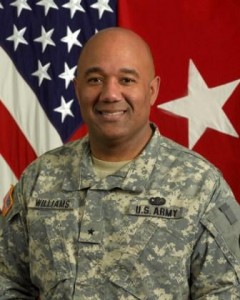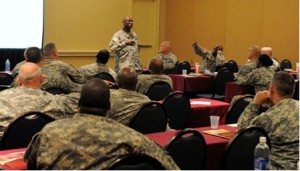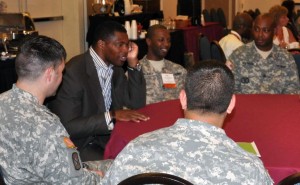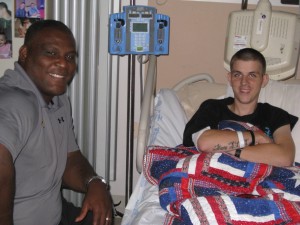 By BG Darryl A. Williams, WTC Commander
By BG Darryl A. Williams, WTC Commander
In November we observe Warrior Care Month. The theme is “Healing the Mind, Body, and Spirit: Unlocking Unlimited Potential”.
Taking care of Soldiers is something we do every day. Observing Warrior Care Month allows us to highlight the significance of keeping Soldiers healthy and safe, and taking care of them when something doesn’t go right. We’re all in the business of caring for the Army’s wounded, ill and injured Soldiers—Active, Guard and Reserve.
I realize most people think of the combat injured when they hear the term ‘warrior care’. Clearly, that is warrior care and there is no higher calling than helping these men and women heal. Warrior care is also preventing illnesses and keeping Soldiers healthy and ready to deploy. Warrior care is arming Soldiers with tourniquets that they can use with only one hand. It’s having the best trained medics in the world standing shoulder to shoulder with our combat Soldiers.
Warrior care is an undertaking that encompasses a broad scope of efforts that extend way beyond the battlefield including managing pain with medication and with complementary medicine such as acupuncture, massage, and yoga. Warrior care means building resilience and ensuring our men and women in uniform are strong in mind, body and spirit. Warrior care is our best researchers looking at how we can advance medicine, improve protective gear and treat trauma and complex injuries. It’s having a battle buddy who looks after you and a leader you can count on.
During Warrior Care Month I ask that you also take time to recognize the men and women who don’t wear the uniform but who support and care for our Soldiers and their families. I’m talking about our partners at the Veterans Administration, Congress, Veterans organizations, non-profit organizations, corporate America, local communities and individual citizens. These are the people retired Admiral Michael Mullen, (former Chairman of the Joint Chiefs of Staff) was referencing when he said there is a “Sea of Goodwill” in America.
I know a lot of you are planning events to honor the wounded, ill and injured men and women in uniform and to highlight what we do and what this Nation does each day in the spirit of Warrior Care. Like me, you’re likely looking forward to the events you’ll be attending. I’m excited about this month. We have a lot going on here in the National Capital Region. We will support the Navy in a wheelchair basketball expo and clinic in the Pentagon on November 18, and on November 22 the Warrior Transition Command is hosting a seated volleyball tournament. It’s going to be a great month. I’ll be traveling, visiting some WTUs and attending events that honor our Soldiers and people who work to keep them safe and healthy. It doesn’t get any better than this!
As I wrap things up, I want to emphasize my three priorities—education, training and employment. A WTU is a place for Soldiers to heal; it’s also a place for them to plan for their future; a place to develop a good, solid way ahead for them and for their family. When they leave a WTU I want them to have received the best medical care possible, have the education and training they need to succeed and have a job or career lined up.
We owe them our best, and Warrior Care Month is a time to commemorate their strength and resilience and the importance of what we do throughout the year.
I’d enjoy hearing about your Warrior Care Month plans and experiences. Please post your comments on this blog by clicking on the headline and scrolling to the bottom of the page to the comment box.
More information on events at WTUs around the country is available on the WTC website at http://www.wtc.army.mil/.


 Editor’s Note: Mark A. Campbell serves as a WTU Master Trainer/WTC Liaison. He joined
Editor’s Note: Mark A. Campbell serves as a WTU Master Trainer/WTC Liaison. He joined 






